When it comes to investment opportunities, few can match the potential of venture capital (VC) funds. But what exactly are the typical returns these funds generate? According to a recent report from Cambridge Associates, the top quartile of VC funds have achieved average annual returns ranging from 15% to 27% over the past 10 years. That’s a remarkable feat, especially when compared to the S&P 500’s average of 9.9% during the same period. However, the story doesn’t end there. The bottom quartile of VC funds have struggled to keep up, with returns mostly in the low single digits, underperforming the broader market. This disparity highlights the inherent risks and rewards of venture capital investing.
Key Takeaways
- The top quartile of venture capital funds have generated average annual returns of 15% to 27% over the past 10 years.
- The bottom quartile of VC funds have mostly produced returns in the low single digits, underperforming the S&P 500 index.
- This wide dispersion of returns is a characteristic of the VC industry, where a few “winner” investments drive the majority of overall fund performance.
- Understanding the historical performance, risks, and rewards of venture capital investing is crucial for investors considering this alternative asset class.
- Diversification and a focus on smaller, more nimble VC funds may be key strategies for optimizing returns.
Defining Venture Capital and Its Returns
Venture capital (VC) refers to investments made in early-stage, high-growth potential companies. VC investments carry significantly more risk than typical public market investments, but also have the potential for much higher returns. VC funds typically invest in companies that are too risky for the public markets, with the goal of generating annual returns in the high teens to low twenties to compensate for the elevated risk.
Understanding Venture Capital Investments
The risks of VC investing include the high failure rate of startups, long holding periods, and illiquidity. However, the potential rewards include the possibility of outsized returns from the rare “home run” investments that achieve massive success. According to a study by NBER researcher John Cochrane, the average annual return on VC investments is around 57% after adjusting for selection bias, though the returns are highly volatile with a standard deviation of 100%.
Risks and Rewards of Venture Capital
The risks of VC investing include the high failure rate of startups, long holding periods, and illiquidity. However, the potential rewards include the possibility of outsized returns from the rare “home run” investments that achieve massive success. According to a study by NBER researcher John Cochrane, the average annual return on VC investments is around 57% after adjusting for selection bias, though the returns are highly volatile with a standard deviation of 100%.
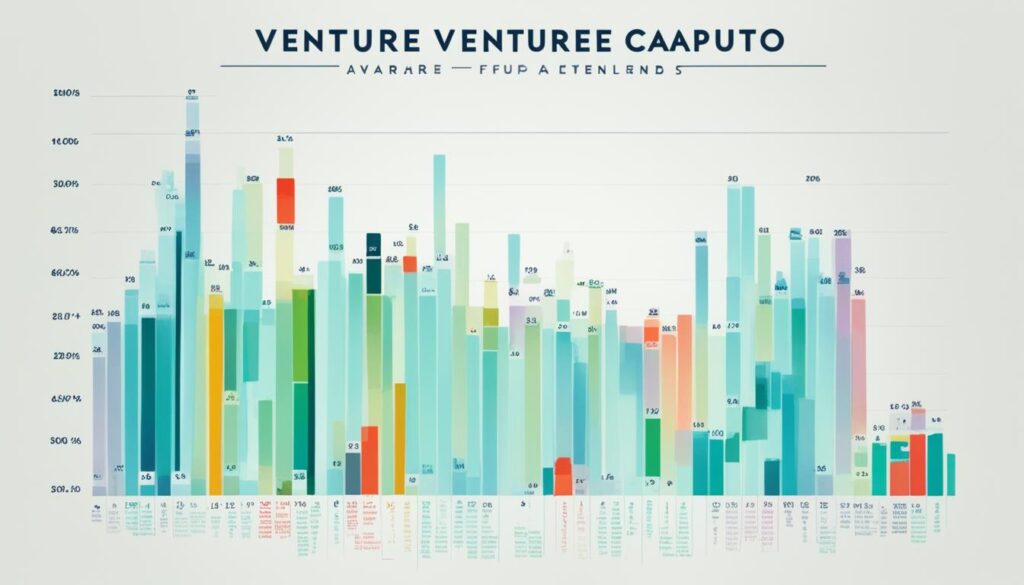
Historical Performance of Venture Capital Funds
The venture capital (VC) industry is renowned for its ability to generate outsized returns, with the top-performing funds consistently outpacing the broader stock market. According to the latest data from Cambridge Associates, this trend has held true over the past decade.
Top Quartile VC Fund Returns
The top quartile of VC funds have delivered annual returns ranging from 15% to 27% over the past 10 years. This impressive performance is in stark contrast to the S&P 500 index, which has averaged around 9.9% per year during the same period. The exceptional returns generated by these elite VC funds can be attributed to their ability to identify and invest in the most promising young companies before they achieve mainstream success.
Bottom Quartile VC Fund Returns
In contrast to the top-tier funds, the bottom quartile of VC investments have struggled to match the broader market, producing returns mostly in the low single digits. This wide dispersion of returns is a defining characteristic of the VC industry, where a small number of “home run” investments drive the majority of overall fund performance. While the upside potential of VC can be substantial, investors must also be prepared to navigate the inherent risks and volatility associated with this asset class.
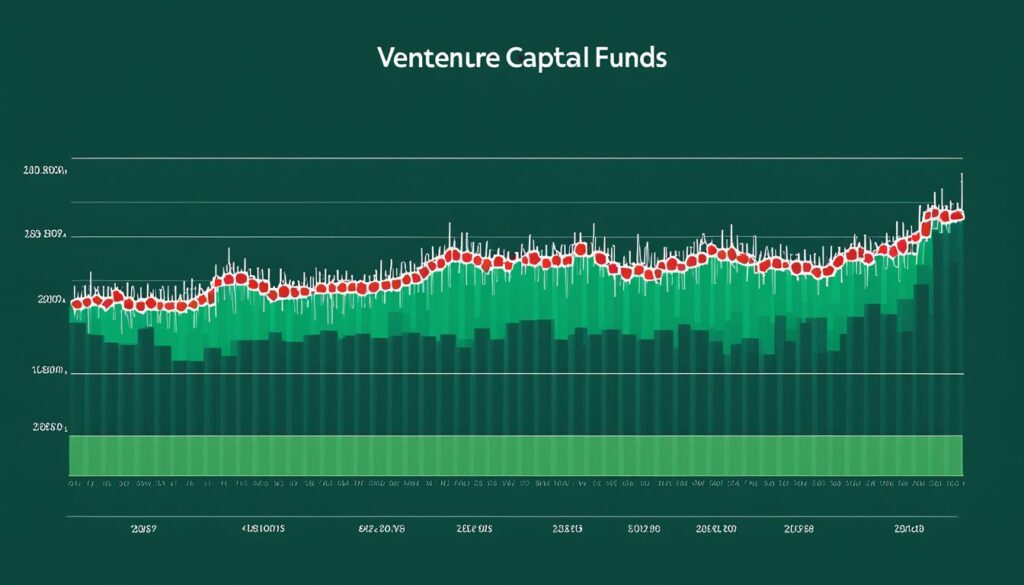
Measuring VC Fund Performance
Evaluating the performance of venture capital (VC) funds requires a nuanced approach, as these investments carry significantly higher risk than traditional public market portfolios. Key metrics used to assess VC fund returns include the Internal Rate of Return (IRR), Distributed to Paid-In (DPI) ratio, and Total Value to Paid-In (TVPI) ratio.
Internal Rate of Return (IRR)
One of the primary measures of VC fund performance is the Internal Rate of Return (IRR), which calculates the annualized return generated by the fund. According to data from Cambridge Associates, the average VC fund has produced an impressive IRR of 19%, outpacing the 11% annual return of the S&P 500 index over the same period.
Distributed to Paid-In (DPI) Ratio
Another important metric is the Distributed to Paid-In (DPI) ratio, which measures the total amount of capital returned to investors divided by the initial investment. Top-performing VC funds often exhibit a DPI ratio around 3x, meaning they have returned $3 for every $1 invested.
Total Value to Paid-In (TVPI) Ratio
The Total Value to Paid-In (TVPI) ratio takes into account both the distributed capital and the remaining unrealized value of the fund, providing a comprehensive picture of its overall worth. During periods of strong VC performance, such as the late 1990s internet bubble, the TVPI ratio can reach as high as 4.5x.

Factors Affecting VC Fund Returns
The success of a venture capital (VC) fund is largely determined by two key factors: the timing and flow of capital, as well as the management fee structure. Understanding how these elements can impact returns is crucial for investors navigating the complex world of VC investing.
Timing and Flow of Capital
The timing and flow of capital into and out of a VC fund can have a significant impact on its Internal Rate of Return (IRR). Funds that are able to make capital calls only when needed, rather than drawing down a fixed percentage upfront, can improve returns by minimizing the opportunity cost of holding uninvested capital. This allows the fund to put money to work more efficiently, generating higher returns over the long run.
Management Fee Structure
The management fee structure of a VC fund can also affect returns. Some funds choose to reinvest their management fees alongside the limited partner capital, thereby increasing the total amount invested and potentially boosting returns. This approach demonstrates the general partners’ (GPs) confidence in the fund’s ability to generate strong performance, as they are putting “skin in the game” alongside their investors.

Selection Bias and Correcting for Underperformance
Research by NBER economist John Cochrane has revealed a significant upward bias in estimates of venture capital (VC) returns. This bias stems from the common practice of only including companies that went public or were acquired, while overlooking those that stayed private or went bankrupt. After adjusting for this selection bias, Cochrane found that the true average annual return for VC investments is around 57%, still high but considerably lower than the 700% average return seen in samples that exclude failed companies.
This finding underscores the importance of accounting for the full spectrum of VC investments, both successes and failures, in order to arrive at a more accurate assessment of the asset class’s performance. By incorporating data on private and bankrupt companies, researchers can paint a more realistic picture of the risks and rewards associated with VC investing.

The implications of Cochrane’s work are significant, as it challenges the often-cited, inflated returns of the VC industry. Investors and policymakers must be mindful of this selection bias when evaluating the merits of VC as an asset class and crafting appropriate investment strategies and regulations.
What is the average annual return of venture capital funds?
According to the research, the average VC fund has generated an annual return of around 19%, significantly outperforming the 11% average annual return of the S&P 500 index over the same time period. However, this average masks a wide dispersion, with top quartile funds generating returns of 15-27% and bottom quartile funds struggling to match public market benchmarks.
Average VC Fund Returns Compared to Public Markets
While the average VC fund has outpaced the S&P 500, the data reveals a stark contrast in performance between the top and bottom quartiles of funds. The leading VC funds have demonstrated an exceptional ability to generate outsized returns, but the majority of funds have failed to keep pace with the broader public equity market.
Volatility and Risk-Reward Profile
VC investments are also considerably more volatile than public equities, with an annual standard deviation of around 100% compared to just 10% for the S&P 500. This high volatility is necessary to explain the occasional “home run” investments that can achieve returns over 1,000%. The high average returns of VC are thus driven by this combination of high risk and high reward.
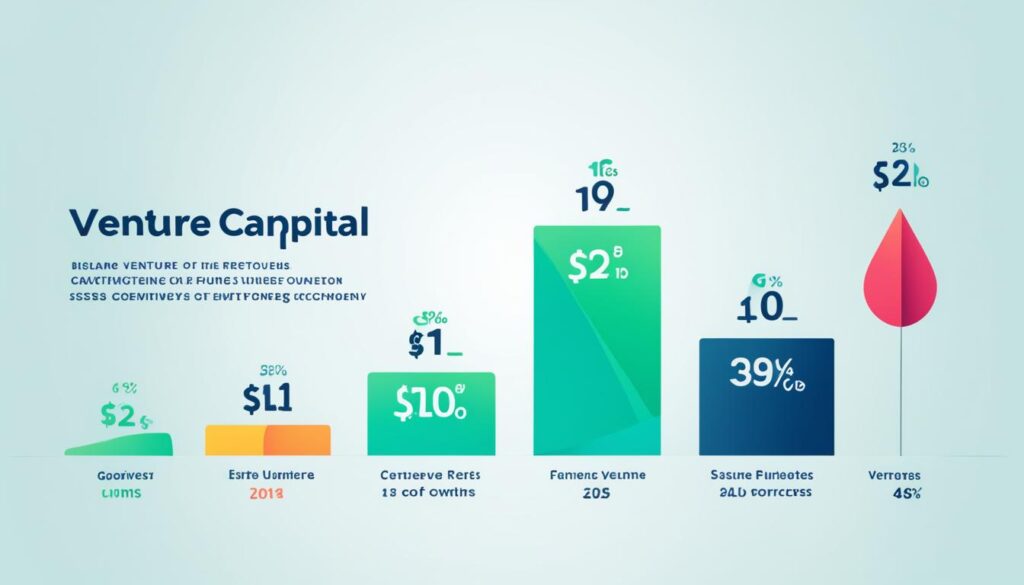
Sector Performance: IT vs. Healthcare/Biotech
While the healthcare/biotech and information technology (IT) sectors both attract significant venture capital (VC) investment, the data reveals a distinct contrast in their performance and risk-reward profiles. Cochrane’s research found that the higher volatility of IT investments gives them a larger arithmetic mean return compared to the more stable healthcare/biotech sector.
The IT sector, with its rapidly evolving technologies and disruptive innovations, tends to exhibit greater volatility in VC performance. This increased risk is often accompanied by the potential for outsized returns from the rare “home run” investments that achieve exceptional success. In contrast, the healthcare/biotech space, while still presenting opportunities for substantial gains, generally demonstrates a more measured and less volatile investment landscape.
| Sector | Volatility | Average Annual Return |
|---|---|---|
| Information Technology (IT) | Higher | Larger arithmetic mean |
| Healthcare/Biotech | Lower | More stable |
This divergence in sector performance highlights the importance for VC investors to carefully assess their risk tolerance and investment objectives when allocating capital. Understanding the unique dynamics of each industry can help guide investment decisions and enhance the potential for achieving favorable outcomes.
Successive VC Financing Rounds and Risk
As startups progress through multiple rounds of venture capital (VC) financing, the risks associated with these investments tend to decline with each successive round. Early-stage seed and Series A funding rounds typically exhibit volatility and beta coefficients close to 1, indicating high risk profiles.
However, as companies mature and move into later-stage Series B, C, and D rounds, the data shows progressively lower volatility and market sensitivity. This reflects the reduced risk profile as startups successfully navigate the early growth phase and de-risk their business models.
According to research, the beta of VC investments declines from near 1 for first rounds to close to zero for fourth rounds, signaling a significant drop in systematic risk. NBER economist John Cochrane’s analysis found that this trend of decreasing risk is a key characteristic of the VC investment lifecycle.
| VC Financing Round | Volatility | Beta |
|---|---|---|
| Seed/Series A | High | Close to 1 |
| Series B | Moderate | Declining from 1 |
| Series C | Lower | Further decline |
| Series D | Lowest | Near 0 |
This trend of declining risk across successive VC financing rounds is an important consideration for investors seeking to optimize their venture capital portfolio. By understanding the risk profiles associated with different stages of a startup’s growth, investors can make more informed decisions about allocating capital and managing their overall exposure to this high-potential but volatile asset class.
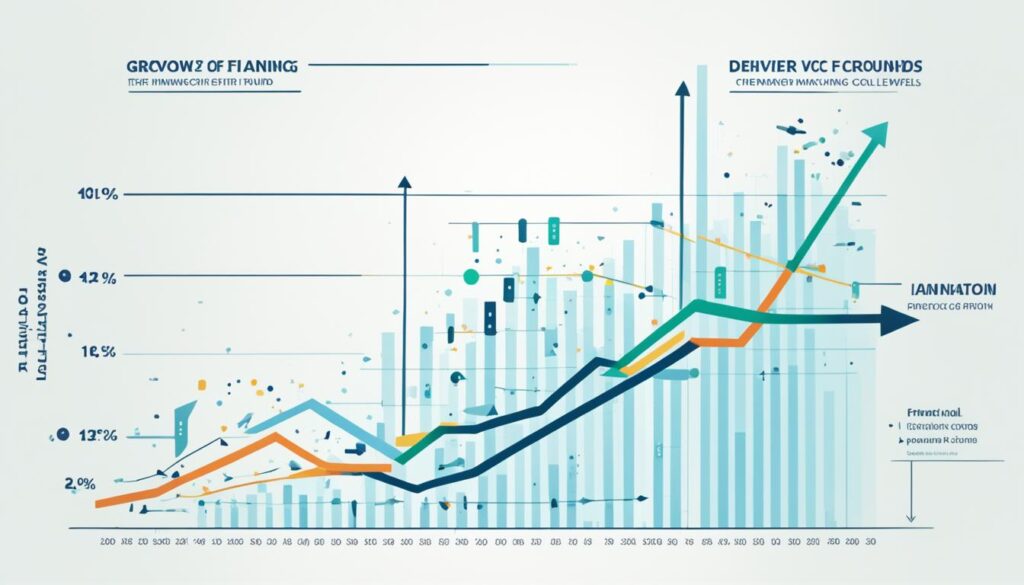
Optimizing VC Fund Returns
Given the wide dispersion of returns in the venture capital (VC) industry, diversification is crucial for investors looking to maximize their chances of achieving strong performance. Investing across multiple VC funds, rather than concentrating in just one or two, can help mitigate the risk of ending up in a bottom quartile fund.
Diversification Across Funds
By diversifying their VC allocations across several funds, investors can spread their risk and increase their exposure to the sector’s top-performing opportunities. This approach can help smooth out the volatility inherent in VC investing and improve the overall likelihood of generating attractive returns.
Focusing on Small and Mid-sized Funds
Research has shown that VC fund performance tends to decline as fund size increases beyond $400-500 million. Smaller and mid-sized funds (typically less than $1 billion) have historically generated higher average returns than larger “mega-funds.” This suggests investors should focus their VC allocations on smaller, more nimble funds rather than the largest players in the market, which may be less agile and unable to capitalize on the most promising early-stage opportunities.
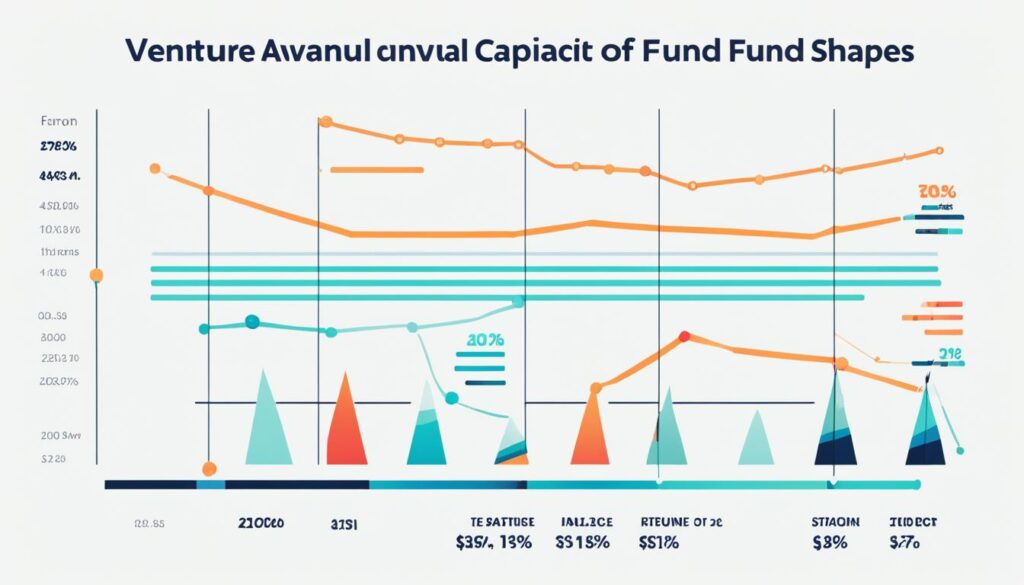
Investing in Venture Capital: Timing and Liquidity
Navigating the world of venture capital (VC) investments requires a keen understanding of the asset class’s unique timing and liquidity characteristics. VC funds typically operate on a 10-year investment horizon, providing patient capital to help nurture and scale high-growth startups. However, this long-term approach does not mean investors must wait the full decade to see returns.
Typical VC Fund Life Cycle
VC funds are structured to make investments over the first 5-7 years of the fund’s life, with the remaining 3-5 years dedicated to managing and exiting those portfolio companies. This timeline allows for the startup companies to mature and achieve liquidity events, such as initial public offerings (IPOs) or acquisitions, which then generate distributions back to the fund’s investors.
Early Disbursements and Exits
While VC investments have relatively long holding periods, VC-backed companies tend to go public or get acquired within 5-6 years after their initial VC funding. This means that VC funds can start making distributions to investors well before the 10-year fund lifecycle is complete, often as early as years 5-6 through these liquidity events.
The combination of a 10-year fund duration and 5-6 year average time to exit for portfolio companies allows VC investors to see a steady flow of returns throughout the life of the fund, rather than having to wait the full 10 years to receive any capital distributions.
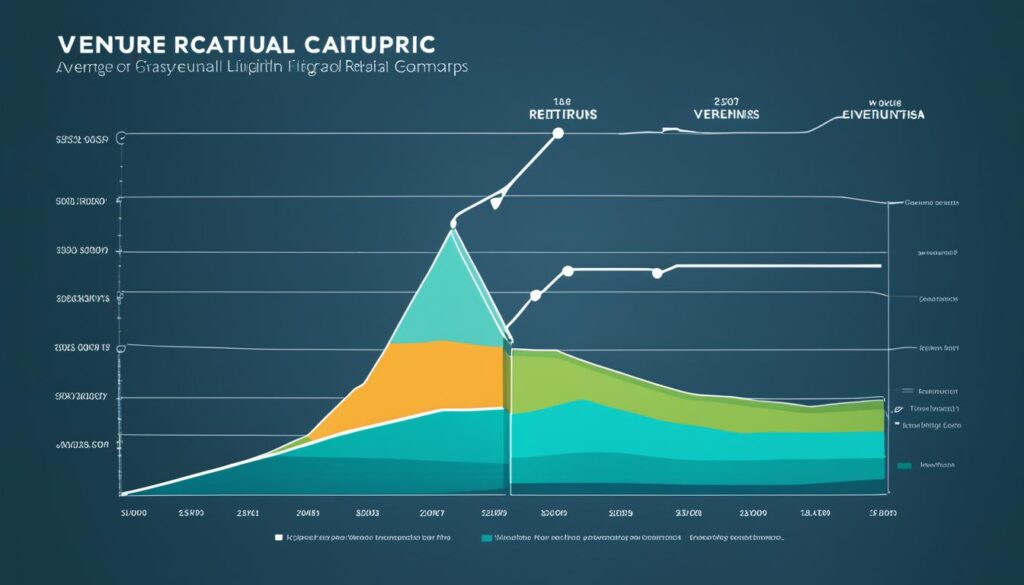
Democratizing Access to Venture Capital
To provide individual investors with access to diversified VC exposure, “funds of funds” have emerged that allow investors to deploy capital across multiple underlying VC funds. This offers instant diversification and can help mitigate the risks of VC investing. For example, a $100,000 investment across 10 VC funds, each making 30 investments, would provide exposure to 300 different private companies.
Funds of Funds and Diversification
By investing in a fund of funds, investors can gain broad exposure to the venture capital asset class without the need to research and select individual VC funds. This approach helps to spread risk and potentially capture the upside of the top-performing VC funds, while also reducing the downside from underperforming investments.
Alternatives to Traditional Public Markets
As investors seek higher returns and diversification beyond the traditional 60/40 stock/bond portfolio, alternative investments like venture capital have become increasingly attractive. While more volatile, VC has the potential to significantly outperform public market indexes over the long run, making it a compelling option for investors willing to accept the higher risks. The potential for outsized returns from VC investments can be a powerful complement to a diversified investment strategy.
Conclusion
Venture capital is a complex and high-risk asset class, but one that also offers the potential for outsized returns compared to public market investments. Understanding the historical performance, risk-reward profile, and key drivers of VC fund returns is crucial for investors considering allocating capital to this alternative investment space. By focusing on diversification, smaller funds, and the unique characteristics of VC investing, investors may be able to capture the full upside potential of this dynamic sector.
The data reveals that while the average VC fund generates annual returns of around 19%, significantly outpacing the S&P 500, this average masks a wide dispersion of results. Top-performing funds can achieve returns of 15-27% per year, while the bottom quartile struggles to match public market benchmarks. This volatility is a hallmark of VC investing, with a standard deviation of 100% compared to just 10% for the broader stock market.
By diversifying across multiple VC funds and focusing on smaller, more nimble investment vehicles, investors may be able to navigate the risks and capitalize on the potential rewards of this alternative asset class. As investors seek higher returns and greater diversification beyond traditional public equities, venture capital remains an attractive option for those willing to embrace its unique characteristics and potentially outsized performance.
